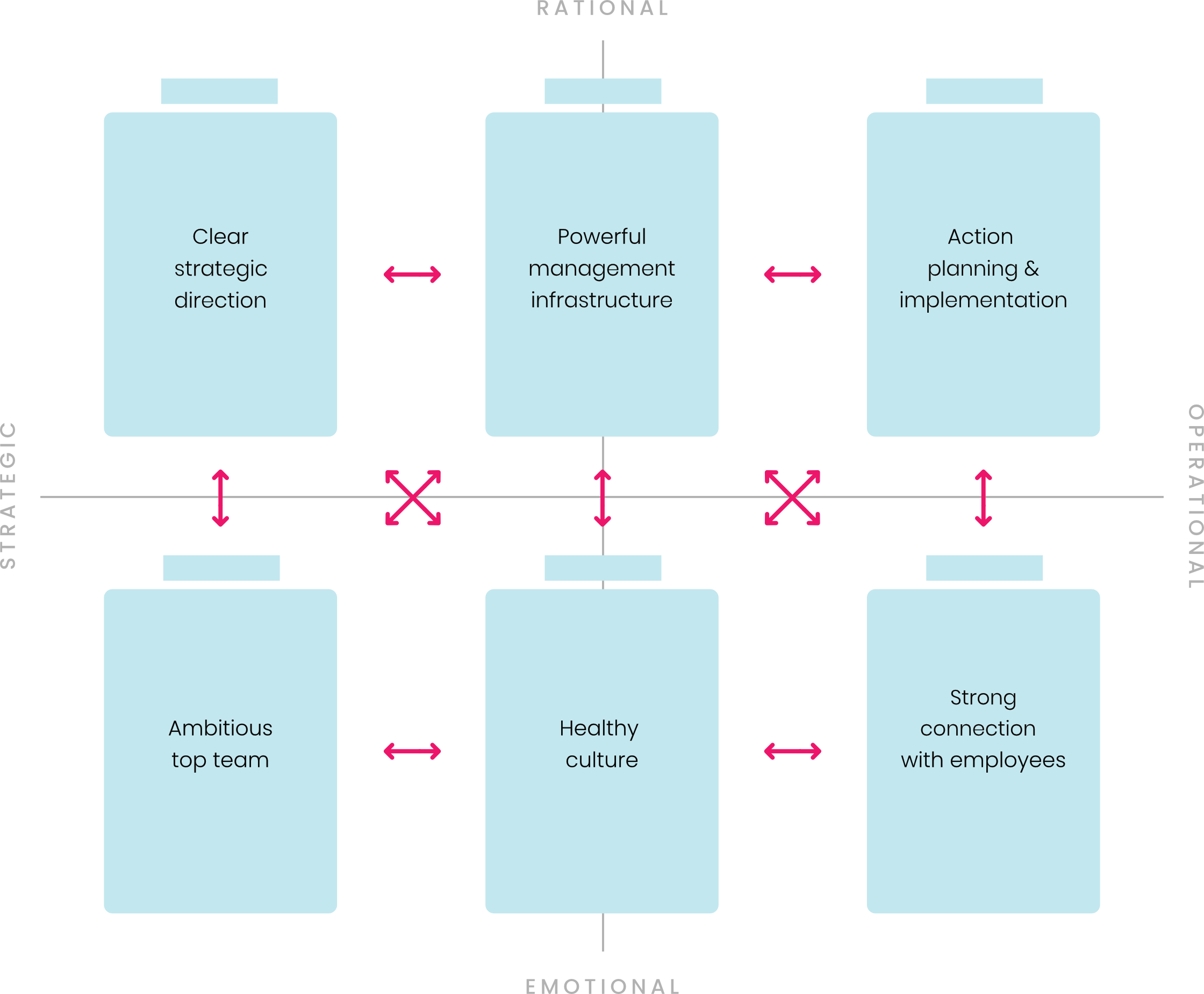How to leverage the concept of timing in business transformations
Picture this: A team leader announces that starting Monday, the team will adopt Agile methodologies. They will have a weekly stand-up, work in Sprints, and create User Stories for each improvement they want to make.
Gerda has been with the team the longest. She has seen so many different methods come and go, that she basically stopped listening. Jason worked Agile in his previous job and doesn’t agree with the way it’s implemented here. Meanwhile, Rose is all too eager to give this new approach a shot – she’d been complaining about the slow pace of getting items from A to B for a while now.
As this scenario illustrates, people respond to change in different ways, depending on their background, personality, context etc. What’s more, not everyone adapts to change at the same pace.
This doesn’t need to be a problem. In fact, in a group setting it can become an advantage. As Rose’s enthusiasm might end up affecting Gerda. Achieving commitment from a few key individuals often leads to a ripple effect, as colleagues start to convince each other.
The same principle holds true on a bigger scale. Introduce a company-wide change at once and you will undoubtedly be met with a lot of resistance. But what if you could start with a single department? By being successful on a small scale, you’ll create a ‘bright spot’, which you can scale to the rest of the organisation.
Of course, ‘bootstrapping’ a transformation in this way isn’t always feasible, particularly during major restructuring. Yet, even in those cases, it’s still important to do some pre-work before the big announcement, to make sure you’ve got a group of people who are mentally strong enough to collaborate or carry the change.
So, how do we approach this?
Building a critical mass of change ambassadors
As we can gather from the example above, change can be introduced at a company-level, but the way we respond to it is highly individual.
Typically, people go through a couple of phases when faced with a transformation. The Kübler-Ross model helps us make sense of this, originally based on studies of terminally ill cancer patients.
These are the typical phases people go through:
- Denial: “This isn’t happening.”
- Anger: “Why is this happening to me? I’ve done nothing to deserve this!”
- Bargaining: “Maybe it’s not as bad as it seems, are there any alternatives?”
- Depression: “It’s hopeless. There’s nothing more to do.”
- Acceptance: “This is the situation, where can we go from here?”
Not all transformations are as traumatic as learning you’ve only got two years to live. Still, people and change are often somewhat of a mismatch. And so a pinch of denial and a bit of bargaining is part of the course.
So, should we create a perfectly linear plan to guide individuals from Denial to Acceptance? No! People progress through these stages at different paces, remember? This means we need to provide information and communication tailored to those still in denial, while simultaneously offering emotional support to those in the middle stages.

Now, if you’ve passed the point of acceptance, how do you get to true commitment, becoming an ambassador for change? This is all about gaining first-hand experience. Let’s try out that new application together, see how it works. By doing so, people are gaining a new skill. If it’s a positive experience, that’s when they will start talking about it to their colleagues! That’s when they’ve become true ambassadors.

The concept of ‘critical mass’ is significant. Research shows that to build a movement, you need the support of 5% of the population. In Belgium, you need 5% of the votes if you want to represent the people with a seat in Parliament. But if you want a movement to spread, you need this 5% to consist of all different dimensions of the population – like male/female, socioeconomic status, young and old etc.
For organizations, this often translates to having 10% of affected employees on board, extending beyond leadership.
In an organisation of 1,000, aiming for 100 ambassadors immediately may be overly ambitious. So you can start with 20-30. This just means it will take you a bit more time to create the critical mass you need to bring along the rest of your organisation.
So, what if you go too fast? Most often, this means you’ll have to build commitment after the fact. People already changed because they had to, not because they wanted to – which leads to resistance. As such, you’ll have to work that much harder to gain their trust.
First, I push the transformation down your throat. And now, I want to coach you. Or even better, I want you to become a coach for others…
Hence, sometimes slow change is the best way. And slowing down at the beginning actually allows you to go faster in the long run.
That being said, you shouldn’t stay in the thinking phase for too long, as this is the breeding ground for doom scenarios. It’s better to quickly go to prototypes, experiments and pilots to go from thinking to doing, so you can feel the impact of the transformation in a real-life setting.
Is your organisation ready for change?
Just like individuals, not every organization is ready for change. That’s where the ‘Six Batteries of Change’ methodology comes into play. It assesses your organization’s readiness across various domains: Clear strategic direction, Ambitious top team, Powerful management infrastructure, Healthy culture, Action planning & implementation, and Strong connection with employees.

Are all your ‘batteries’ charged and displaying green? That’s an excellent sign! Studies indicate that 95% of transformations that begin with a ‘Six Batteries Scan’ and sufficiently charged batteries achieve their intended outcomes.
On the other hand, if all batteries are depleted, showing red, it’s a stark warning sign. This means the skills needed for big transformations are lacking. There is no clear strategy, purpose or priorities, no project charters or methodology. Even if they understand that people can resist the change, they’d have no idea how to respond to it.
In such cases, forcing a major transformation could be detrimental. You’ll first need to implement a good enough practice for all batteries; creating a foundation of minimum viable capabilities to build upon.
What this means in practice, is that you bring together a group of people who develop the basic skills to cover all the capabilities of the batteries. These people have to become the ambassadors of an approach that allows you to handle change as the new normal. After getting this in place, you can speed up.
Of course, reality doesn’t always align with best practice scenarios. And as much as we’d want to avoid it, sometimes an organisation needs to initiate a transformation even if it’s not fully prepared. If so, it’s best to start with small, manageable changes, build a critical mass, and then scale up from there. Defining the scope of the transformation becomes even more critical if the foundation isn’t solid.
Once you’re out of the danger zone and have successfully built a critical mass, it’s time to start thinking about accelerating change!

Geert Letens
Research insights and infographics from “The Six Batteries of Change”.
